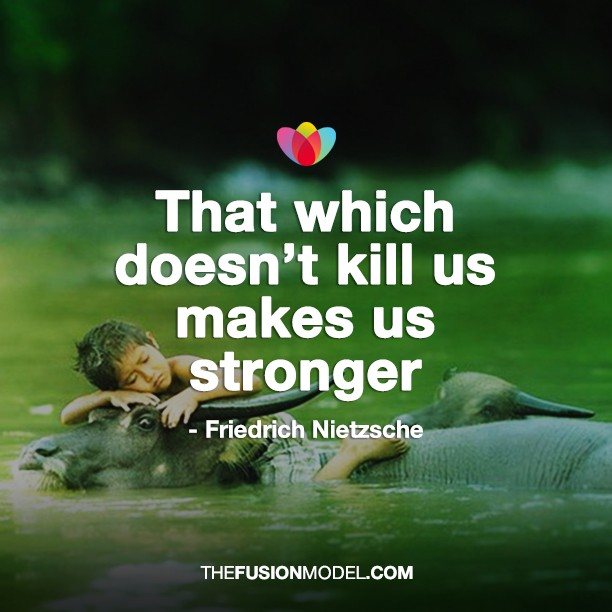Paul was a broken man. His eyes were shadowed and tired. He looked pale and gaunt like he hadn’t been eating properly.
‘I feel like ending it all.’ Paul spoke in an unnerving, detached voice. ‘What’s the point in going on? I simply don’t see a future worth living.’
‘Paul’ I said ‘Can I ask you one question?’
He glanced up from the floor. ‘What?’
‘Do you really want to be dead forever, or do you just want the pain to stop?’
When life was good
Last year, Paul was flying high. As a top executive for a large PR company, he traveled the world, flew business class, stayed in the best hotels and was respected by his peers. Our work together then was largely coaching to maintain high energy levels, self esteem and confidence. We worked on goals and targets and he was very happy with his life.
Over Christmas, his wife began to complain of feeling tired and unwell. Her symptoms were indicators of a terminal illness and, sadly, within a few months, she died.
Paul was devastated. His life began to unravel. He couldn’t sleep, concentrate or function at work. He was given time off. His GP gave him antidepressants. He began to drink more heavily.
It seemed to Paul that his perfect life was unravelling. He had lost the thing most important to him in the whole world. He simply couldn’t imagine a life without his wife. He considered killing himself.
I recognized Paul was suffering from ’emotional hijacking’. He was in a dangerous mindset. I would have to act quickly.
Disturbing stats
More young men die in the UK each day as a result of suicide than road accidents, HIV and assaults combined. Suicide is now the biggest killer of young men across the UK, a charity has warned.
The figures show a rising trend. In 2011, for instance, a total of 6,045 people took their own life – 4,552 of them were men with the highest rate in the male age bracket 30-44.
“The reasons for suicide are complex and often very individual,” said a spokesperson from the Campaign Against Living Miserably, CALM.
On average there are now three young male suicides in Britain every single day.
If you feel suicidal like Paul, you need some crucial information about ’emotional high jacking’ and even more urgently, you need an effective tool for switching it off.
To really understand, we need to look at how the human brain evolved.
Danger: Why suicide can seem the only option
Millions of years ago, at the dawn of our evolution, we had tiny reptilian brains which controlled out basic instincts to breath, eat and follow repetitive patterns that promoted our survival – a very basic brain.
As we evolved into mammals, we developed another layer of brain material, now known as the limbic system. From here emerged the emotions which became very important for our survival, love, hate, anger, fear.
These emotions were and still are necessary for our survival:
Love, so that we could form bonds and family groups and so that we would not abandon our offspring but would nurture and feed them and thus ensure the survival of the group in the next generation.
Hate and anger, so that we would have the ability to fight or kill if our own survival depended on it, or the survival of our family group.
Fear, so that we knew when to run!
These emotions are powerful, very black and white and need to be able to operate very quickly. If you are faced with a wild animal, or perhaps these days a bus running towards you, you will automatically and instantaneously jump out of the way – without thinking – there is no time to think in those situations.
As the human species evolved again, it developed the higher cortex, or rational thinking brain. This is the part of the brain associated with our higher intelligence, the power of speech, logical thought, the problem solving part of the brain…..the part of the brain which gives us the ability to step back from a situation and see all the options, the areas of grey which are not available to the mammalian brain and its basic functions.
Most of the connections from the emotional brain to the neo cortex are on the right side and the connections to the rational brain are on the left.
And so we have a brain of two halves emotional on the right and rational, higher intelligence on the left and here is the key to why we often act in an irrational way.
Big emotions make us stupid!
The more emotional we become, the more stupid we become. For our survival, the emotional brain has the ability to hijack the rational brain. Think of the bus running towards you at high speed – no time to think.
So when we become caught up in our emotions, we actually become very stupid. We have lost the ability to step back and look at all the options and every thing is seen in black or white terms. Either everything is alright or everything is all wrong!
This is a clear explanation for depression, which is a huge emotion. It also explains anxiety and panic attacks where the fight or flight system becomes permanently switched on.
It also explains obsessions and compulsions like self harm, where the arousal and expectation produce adrenaline and other emotion-related hormones and chemicals, which feel as though they can only be dissipated by performing the ritual.
It also, sadly explains why people can come to the conclusion that they must end it all.
Remember that huge emotions produce black or white thinking? Either everything is alright or everything is all wrong. ‘I cannot continue to live like this……. so I must die.’ The higher intelligence, the part of the brain which says ‘hang on there may be other solutions if you sit down and think about this’ are switched off at that moment.
The old term ‘whilst the balance of his mind was disturbed’ turns out to be hugely accurate. It’s clear then, that we need to be able to turn off the this dangerous mindset and lower the extreme emotional arousal.
Breathing the danger away
My clients often comment ‘Breathing? I do it all the time! What’s so different about this technique?
The answer is simple:
When we breathe in, we activate the sympathetic nervous system. Because of gravity, it is more of an effort to breathe in and so, when we breathe in, we tense.
When we breathe out, we engage the parasympathetic nervous system. We relax. We have a feeling of letting go.
Therefore, if we continue for 5 or 10 minutes to engage a breathing pattern of a longer out breath than in breath, we can’t help but relax. If we count while breathing, the effect is even stronger as the rational brain is engaged by the numbers.
We are elevating the neocortex, which automatically has the effect of lowering emotional arousal.
Practising this simple breathing technique establishes the ability to relax whenever you choose so that you can take back control from emotional hijacking.
This simple breathing technique has been used again and again with astonishing results. Its effectiveness is not disputed. However, like any technique, it improves with practise.
I generally suggest 5 minutes first thing in the morning to get the day off to a calm start, 5 minutes last thing at night to enjoy deeper and more restful sleep, and 5 or 10 minutes during the day or whenever emotional levels start to rise.
Try it for yourself. There are no nasty side effects, no contra-indications and, at the point of writing nobody has found a way to tax us for the air we breathe…so it’s free !




